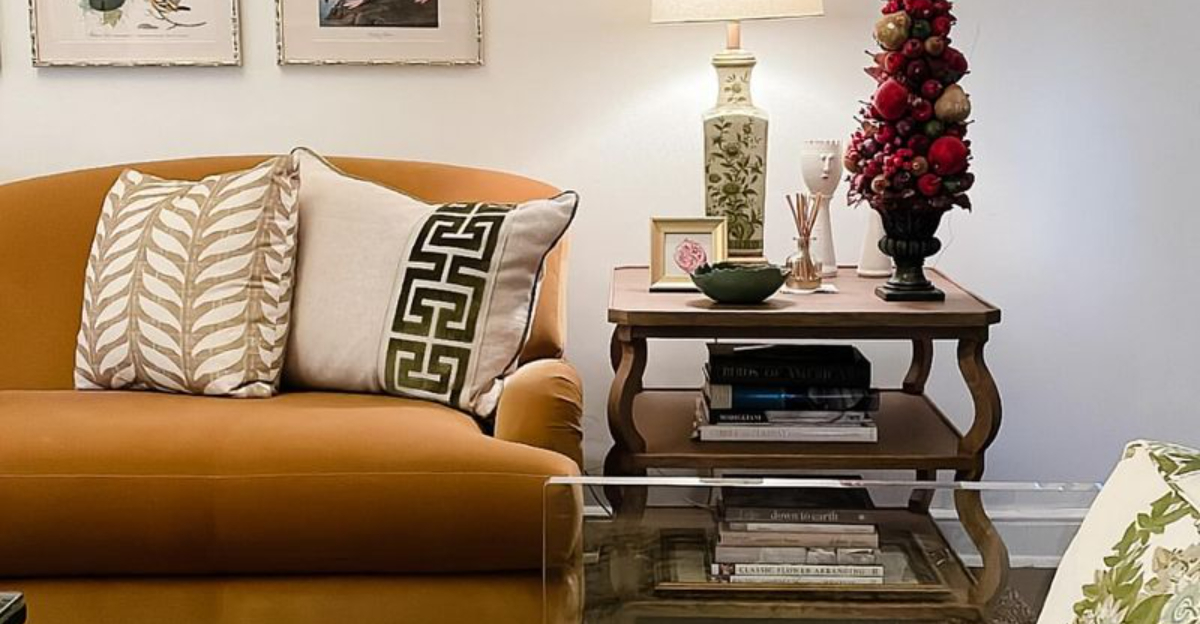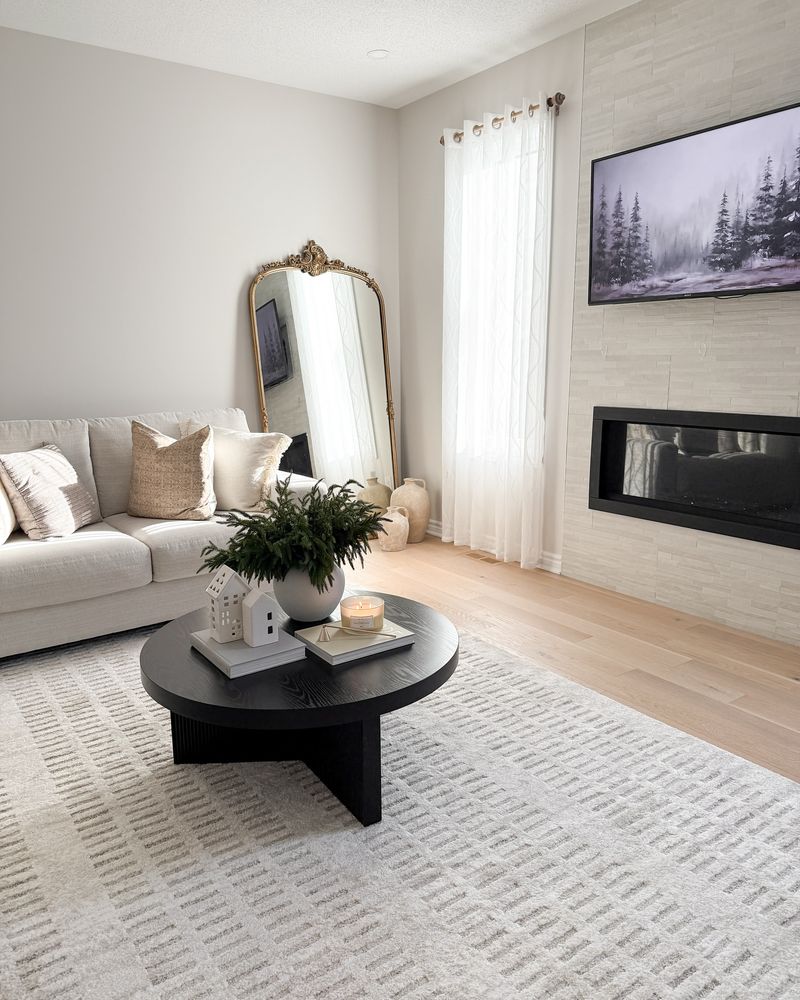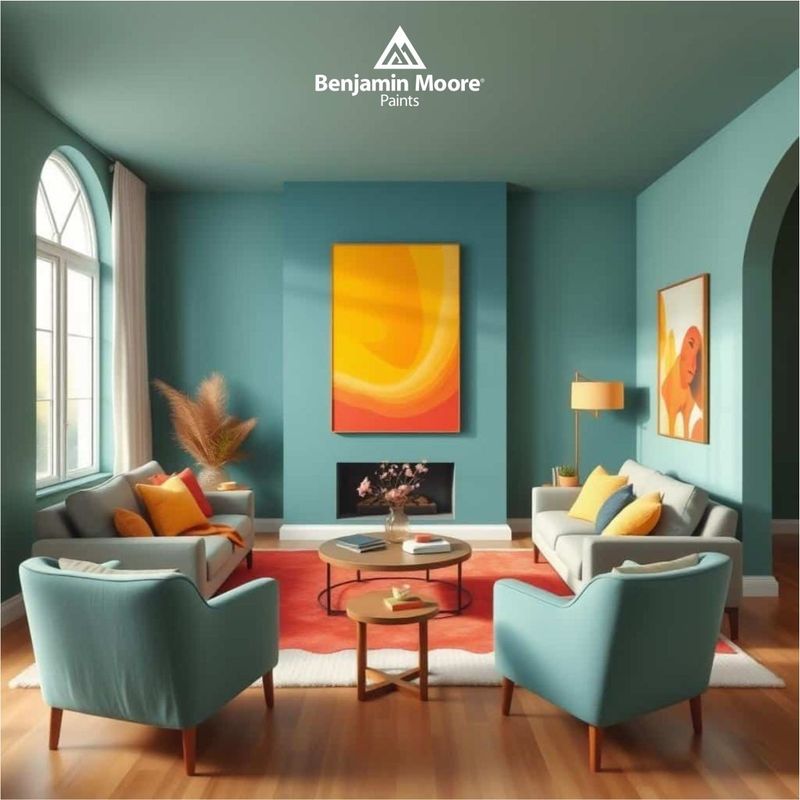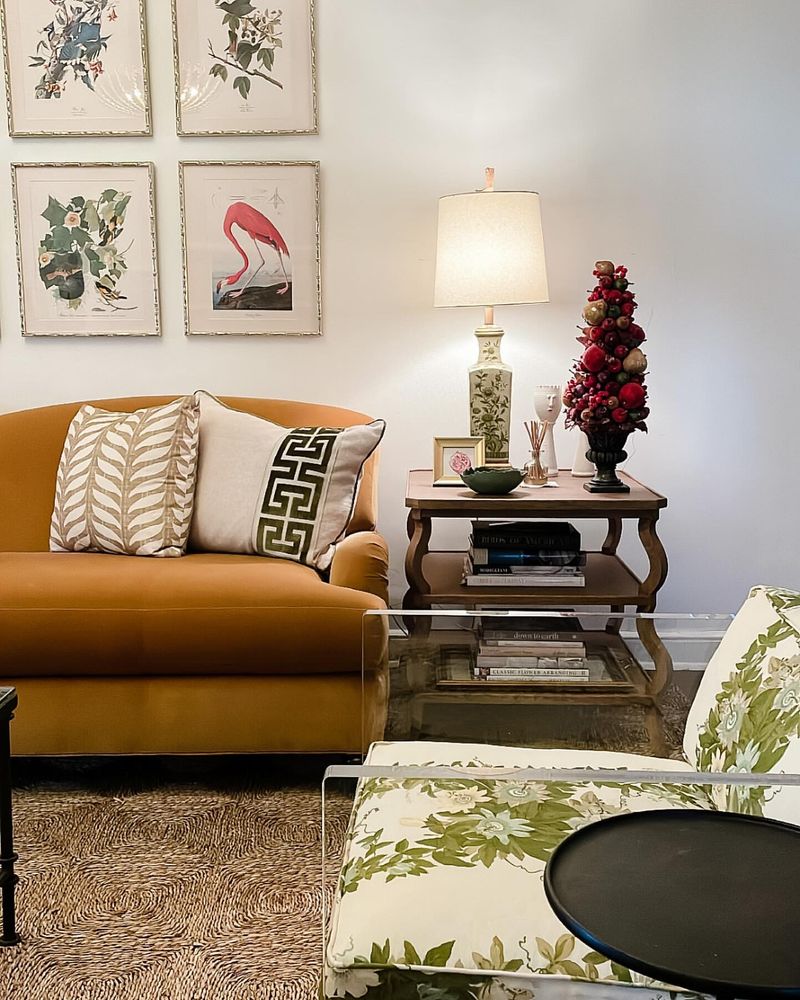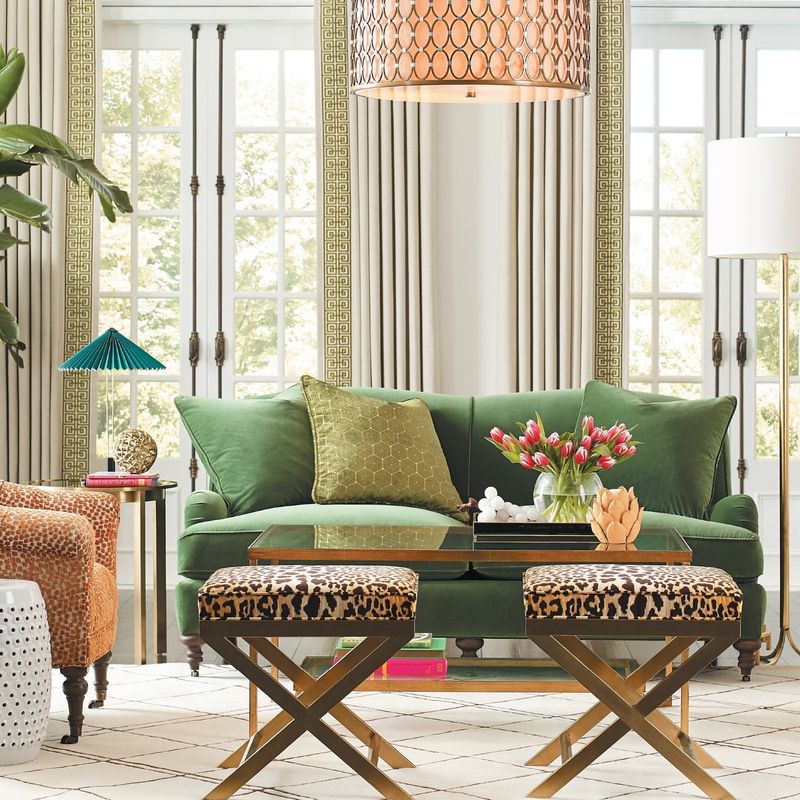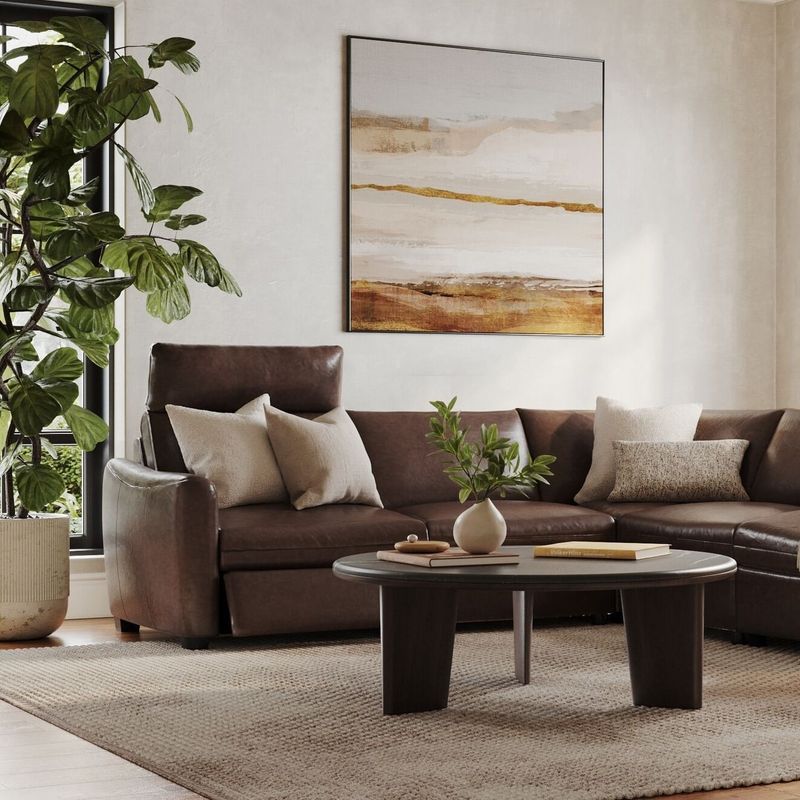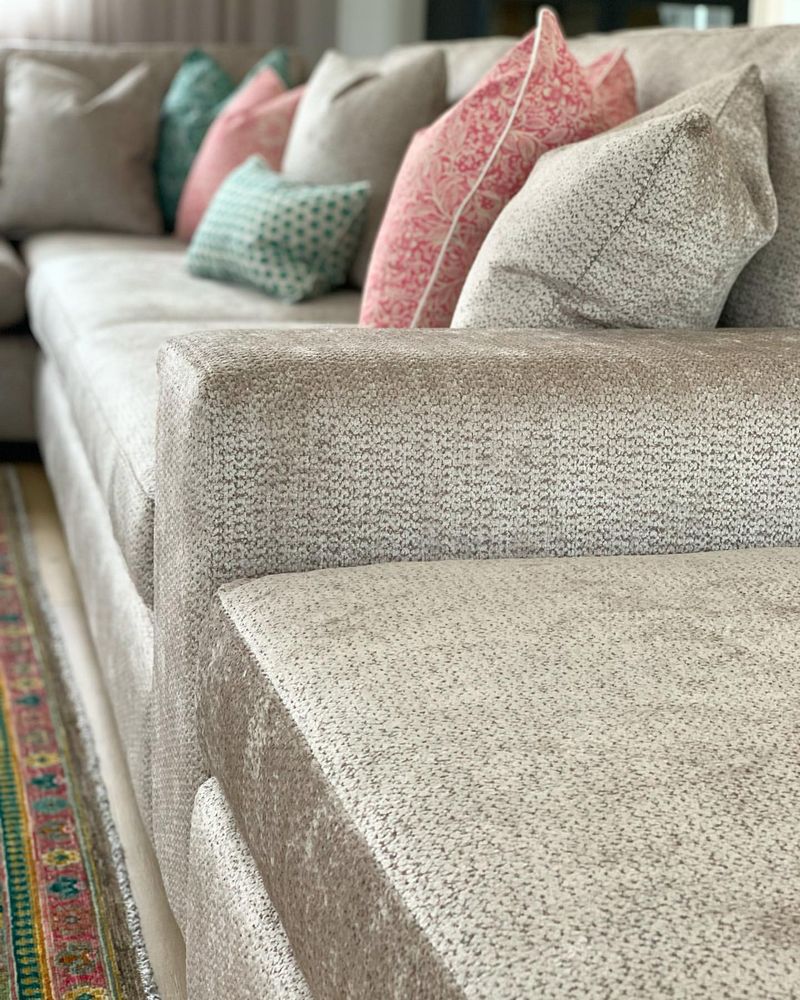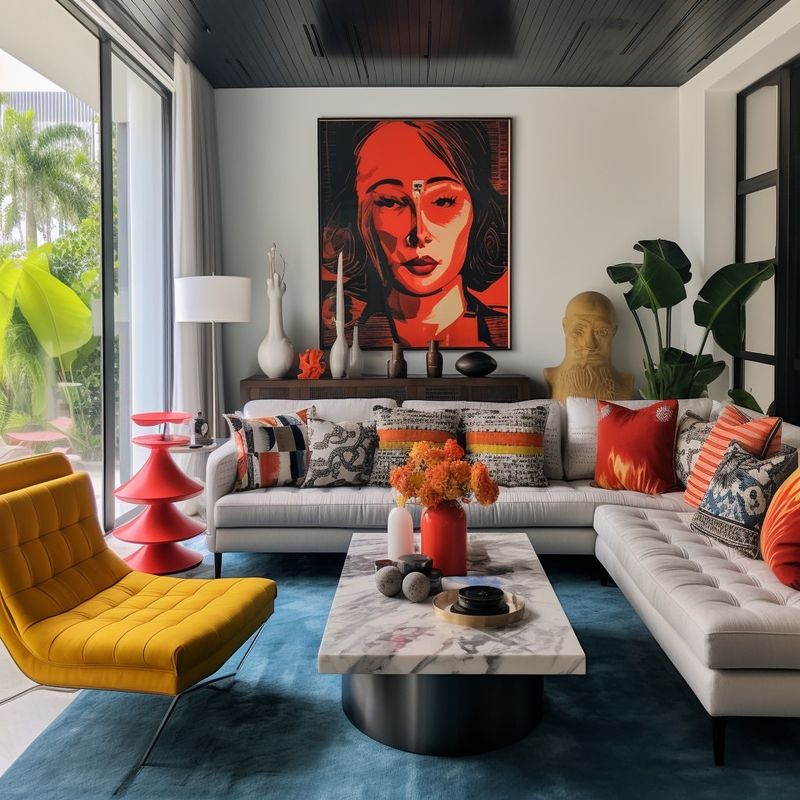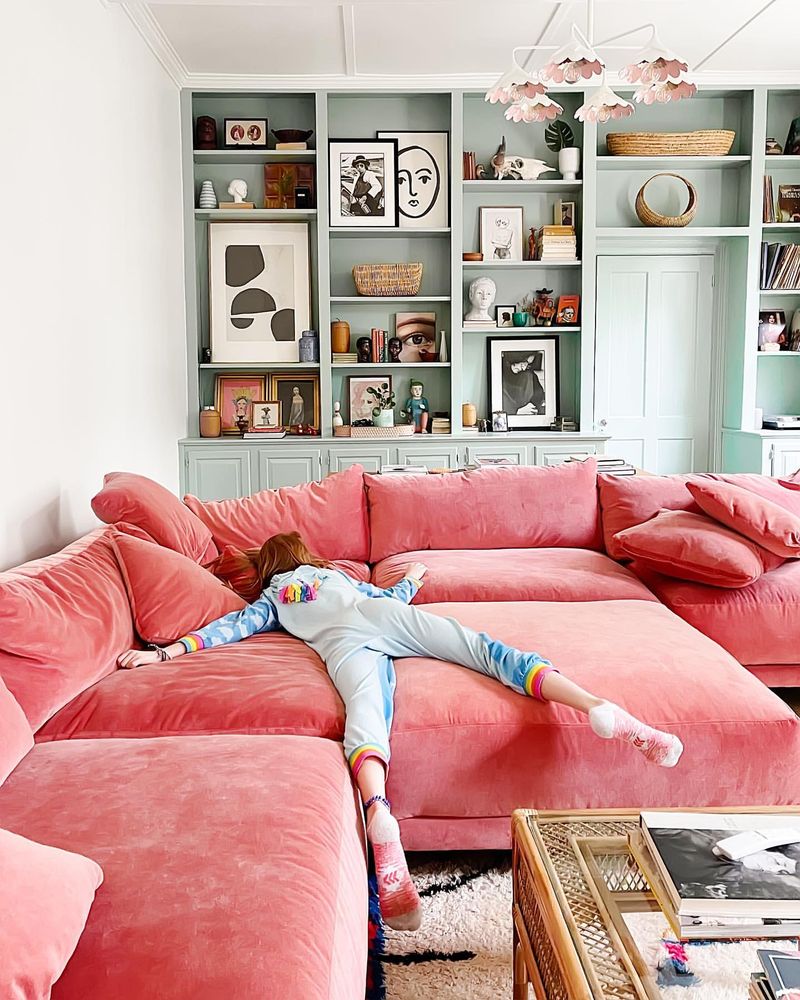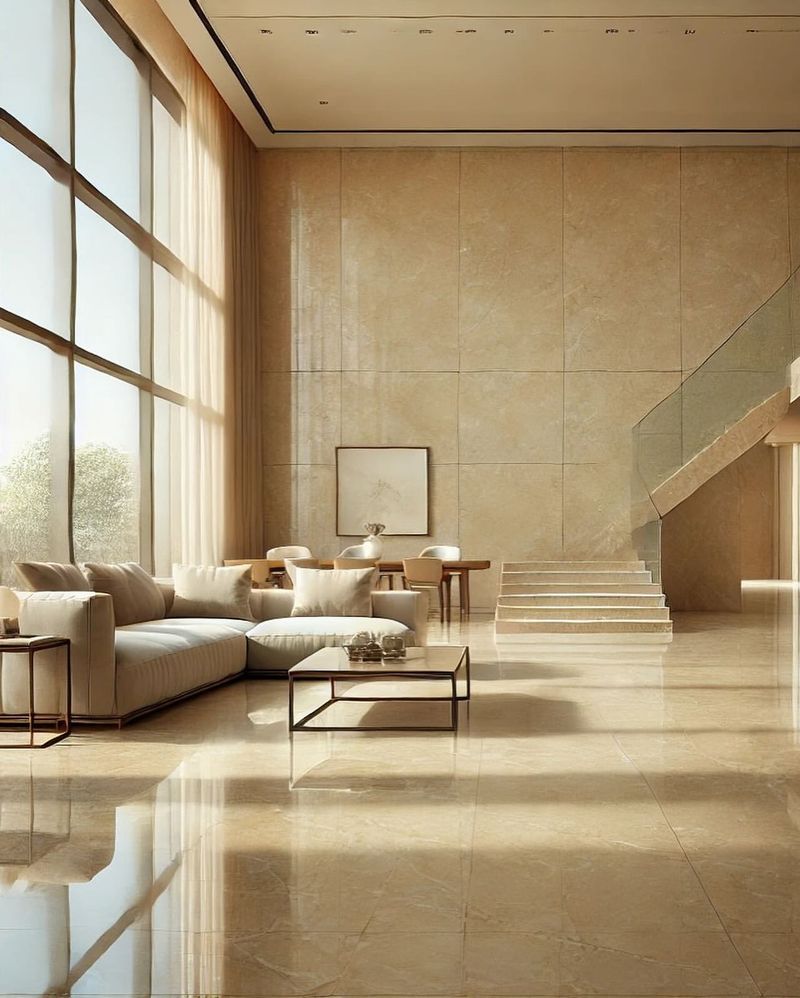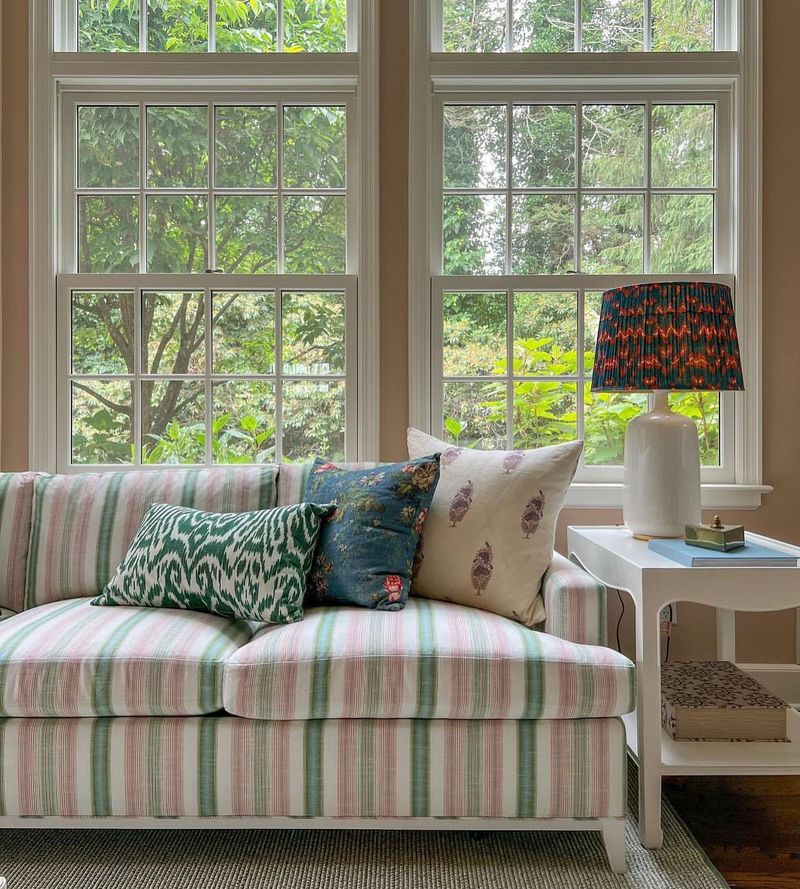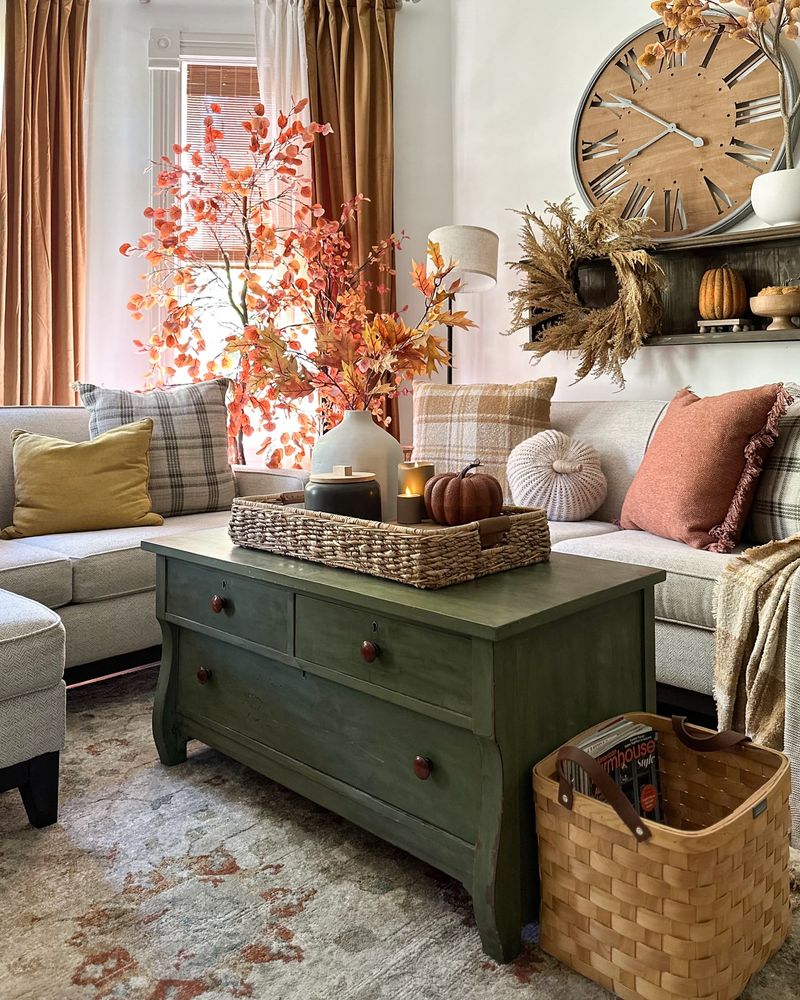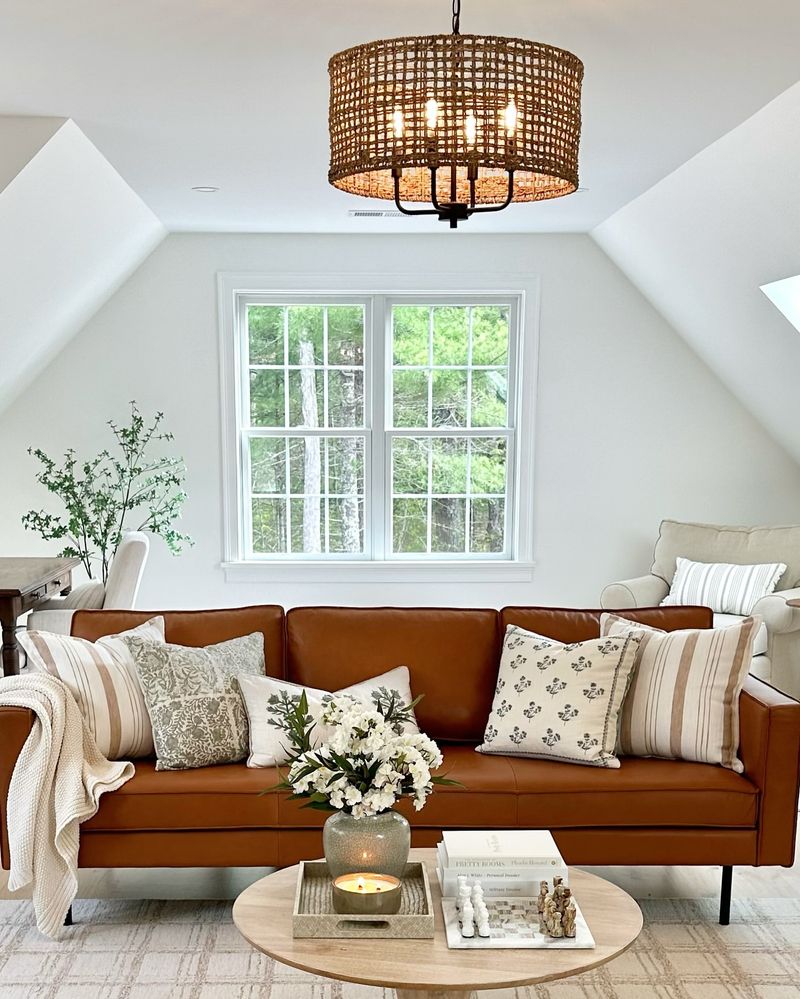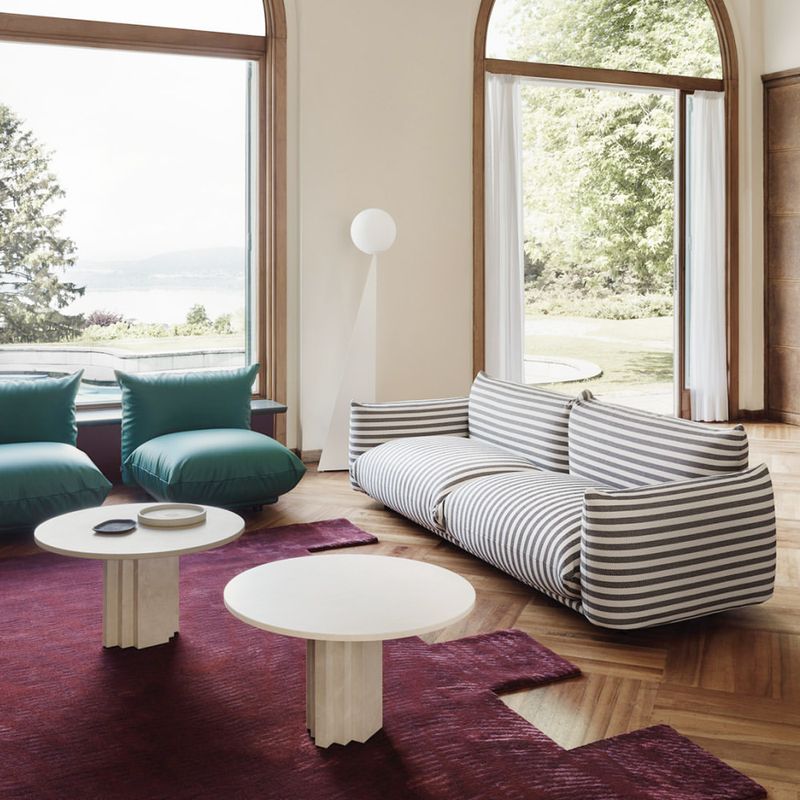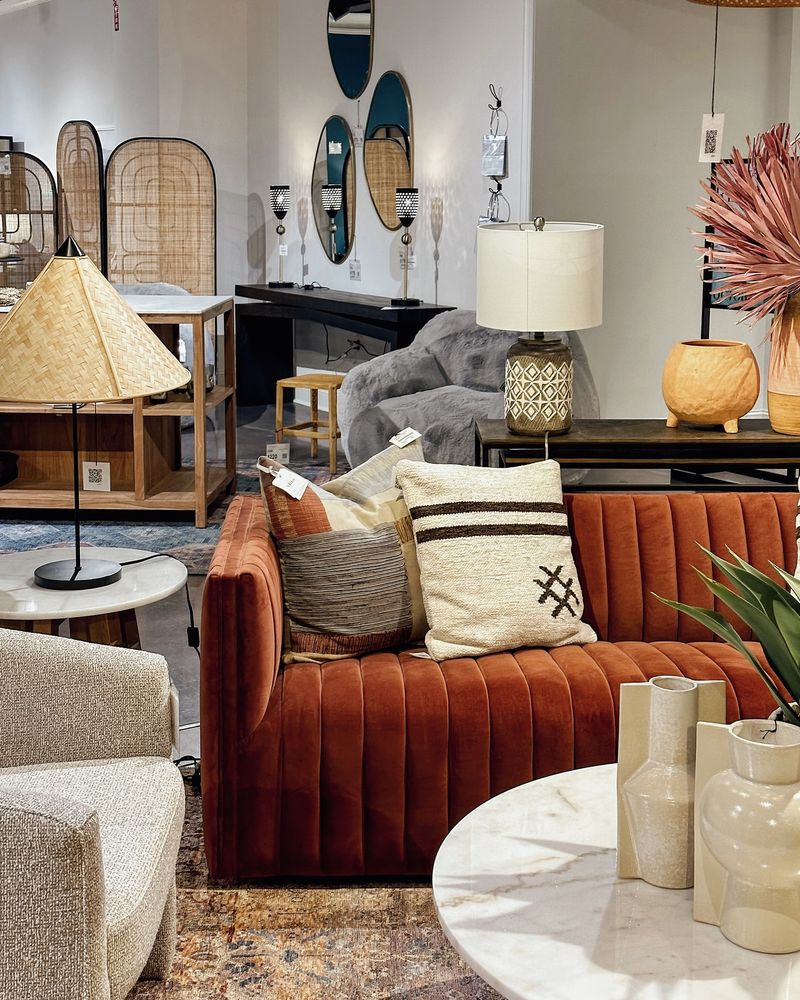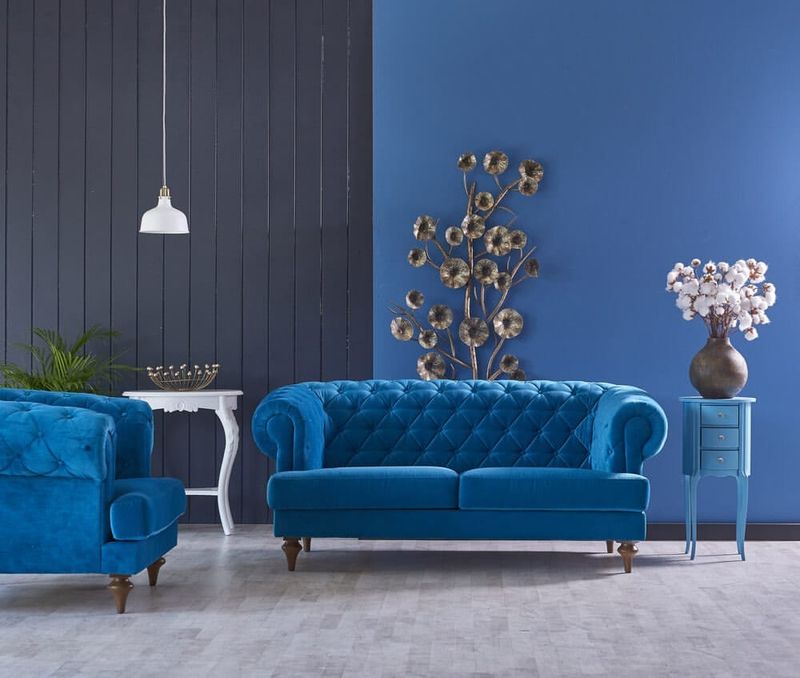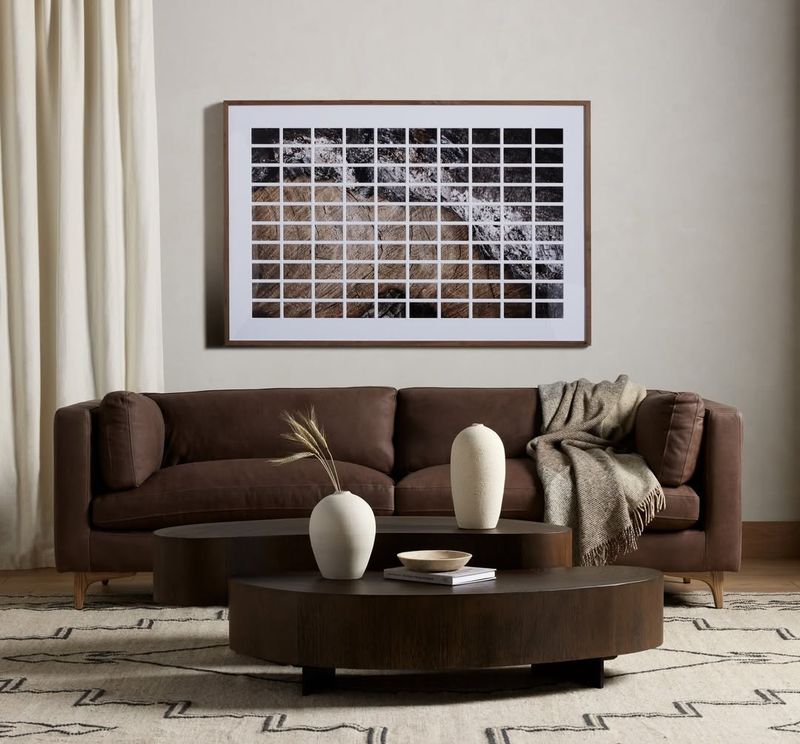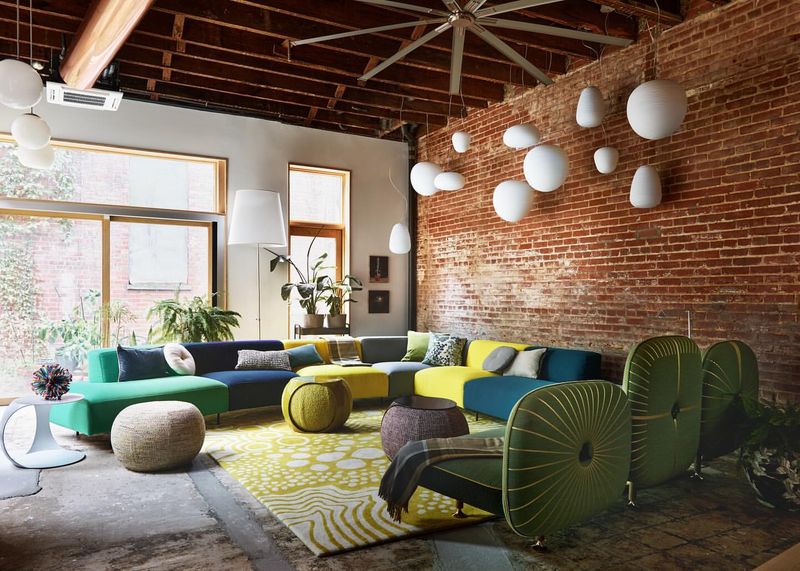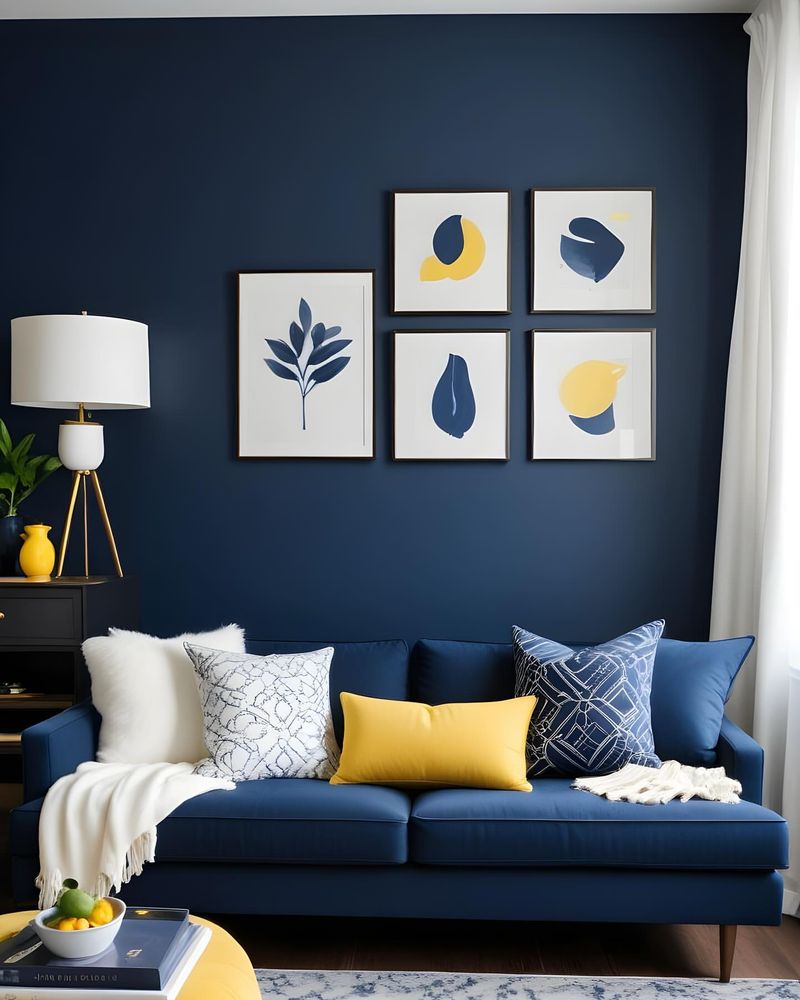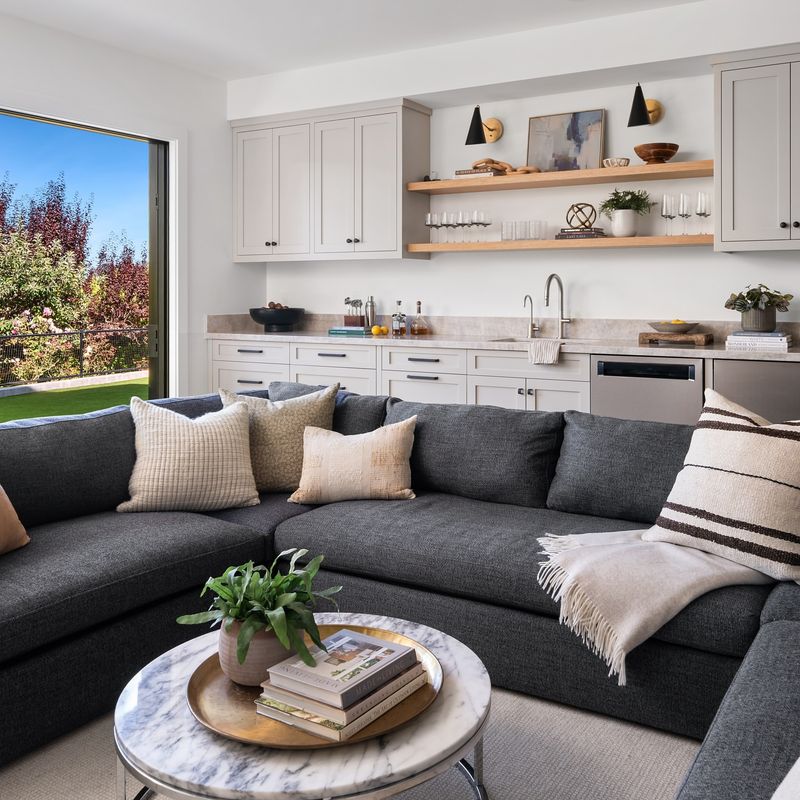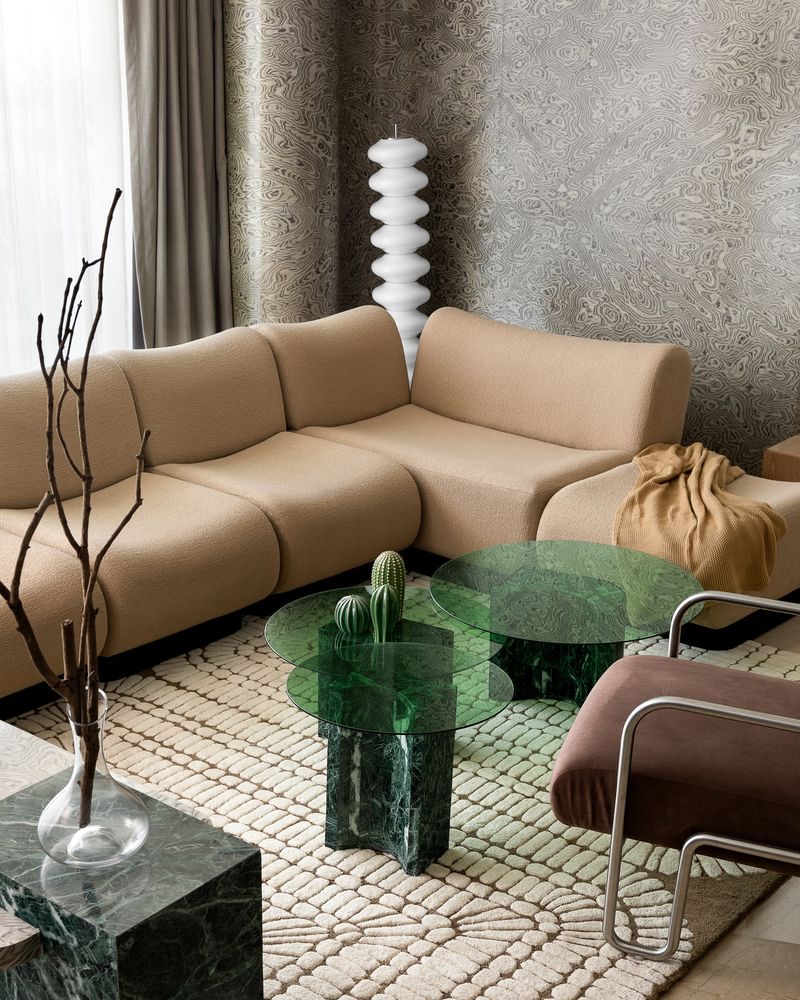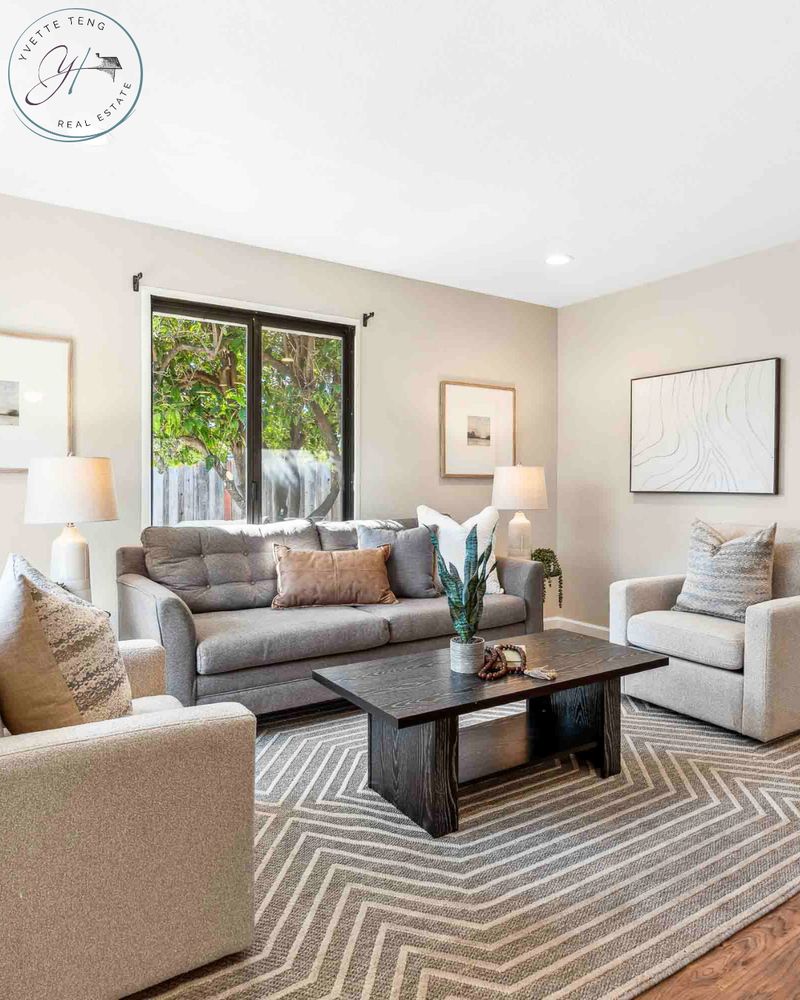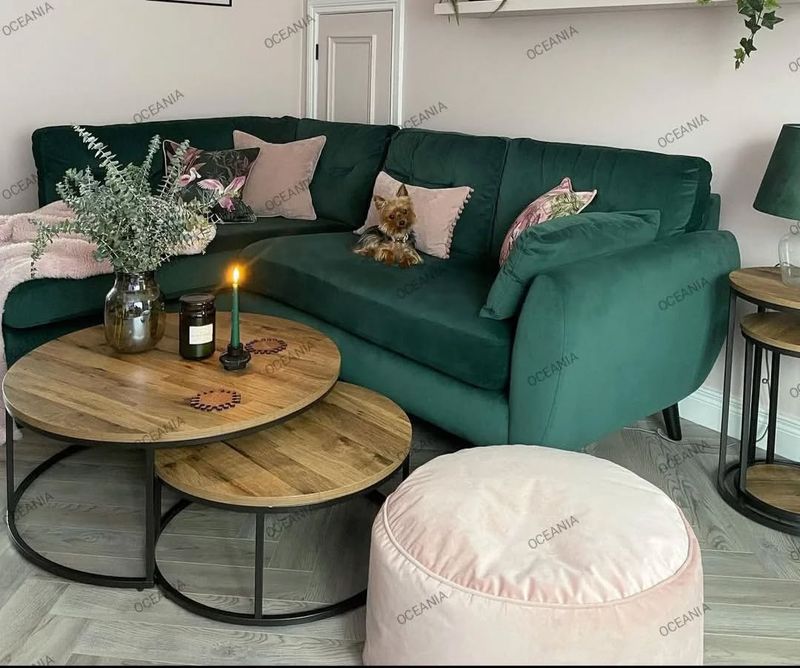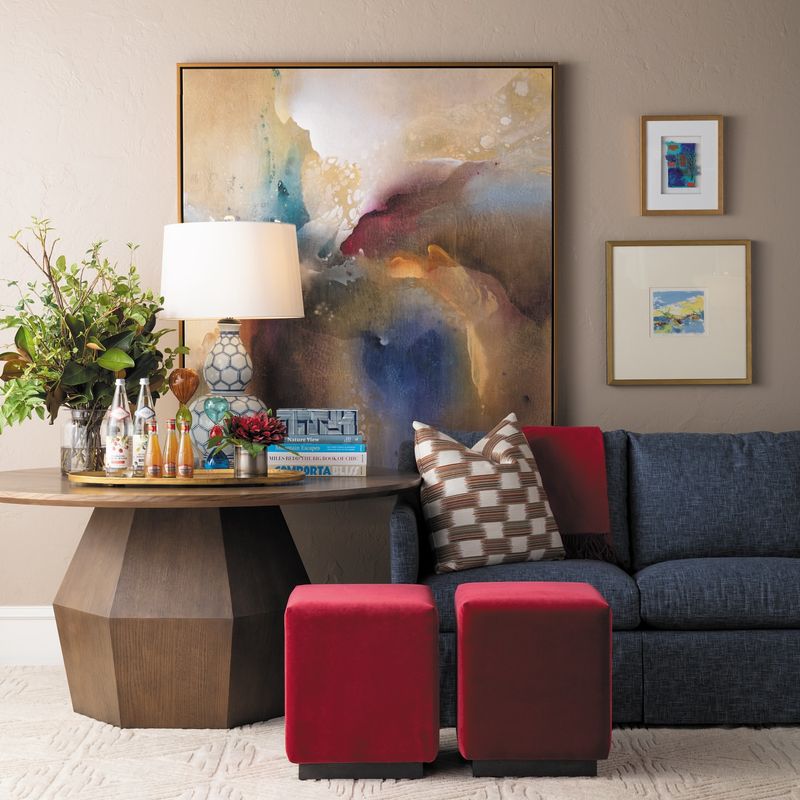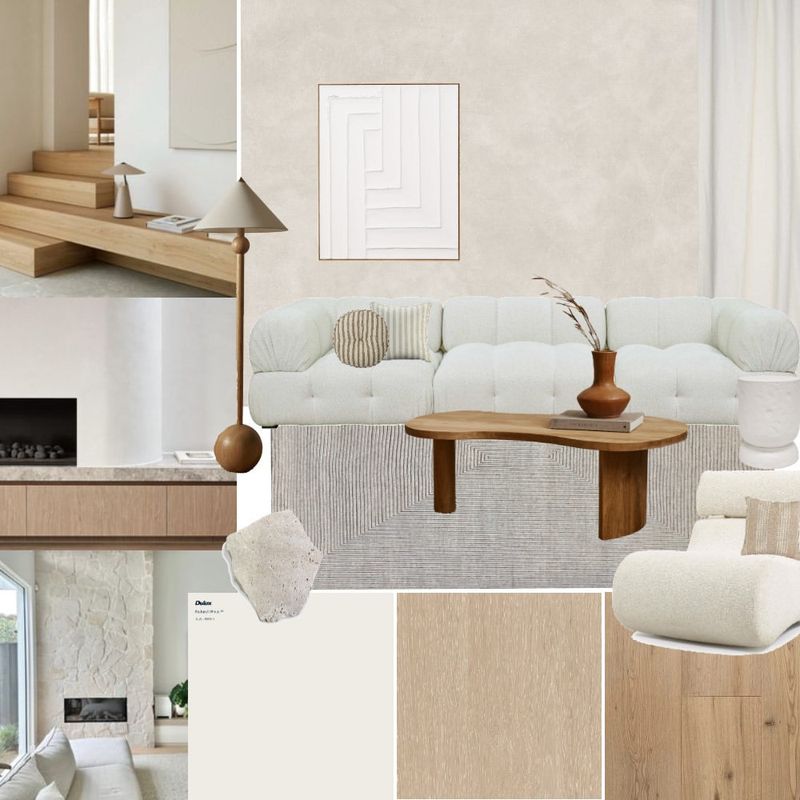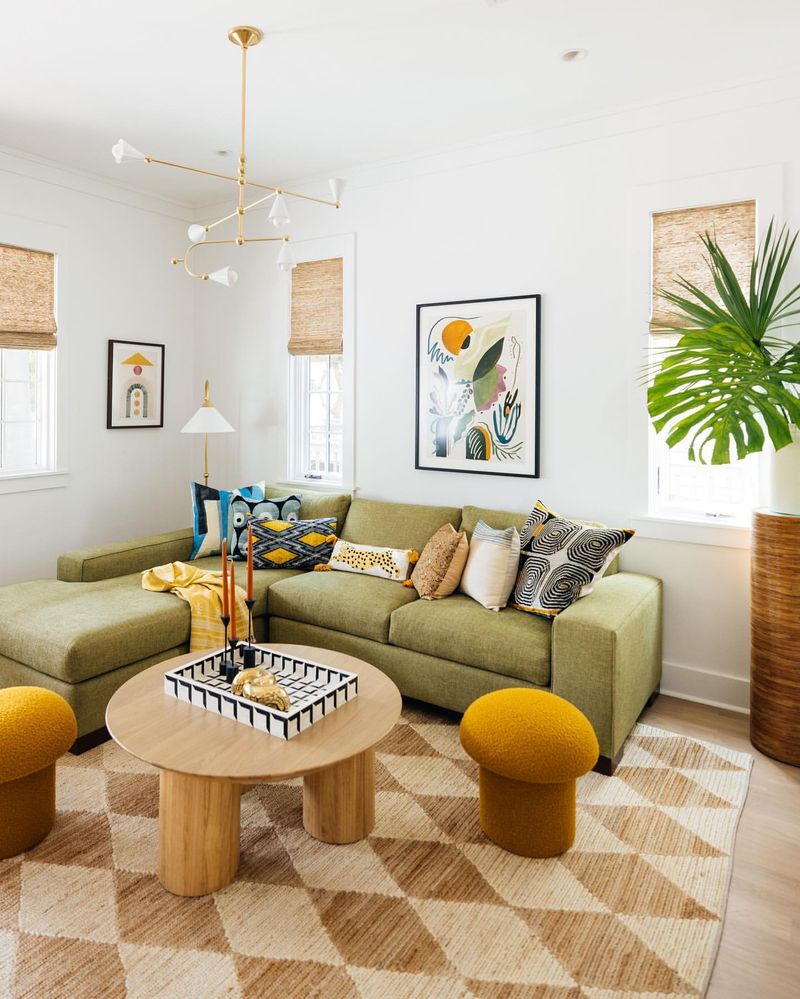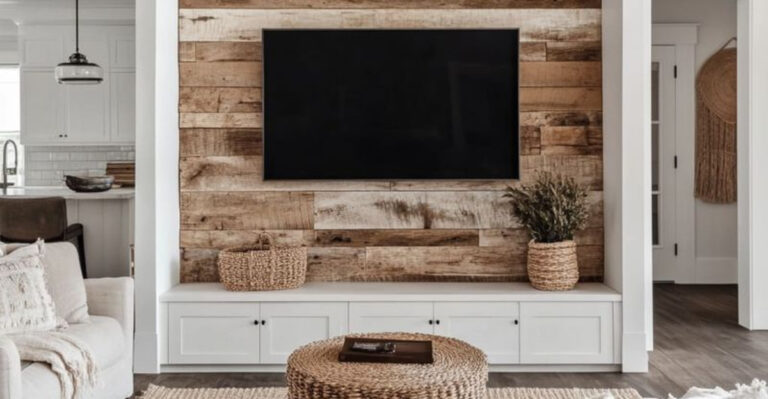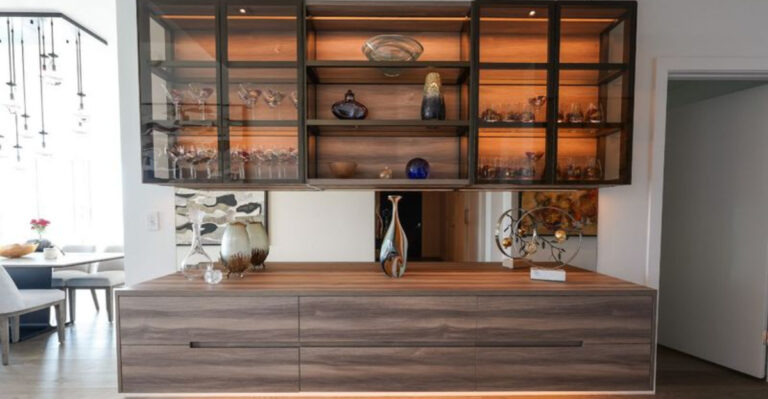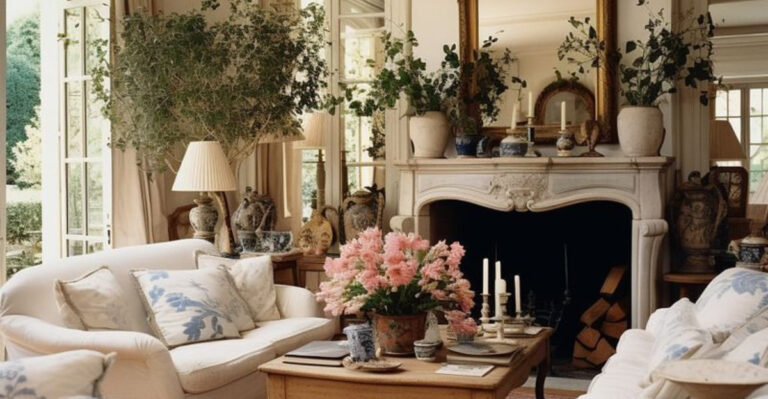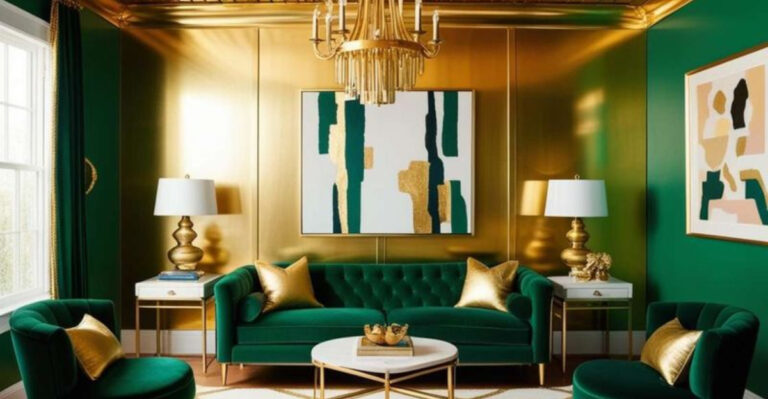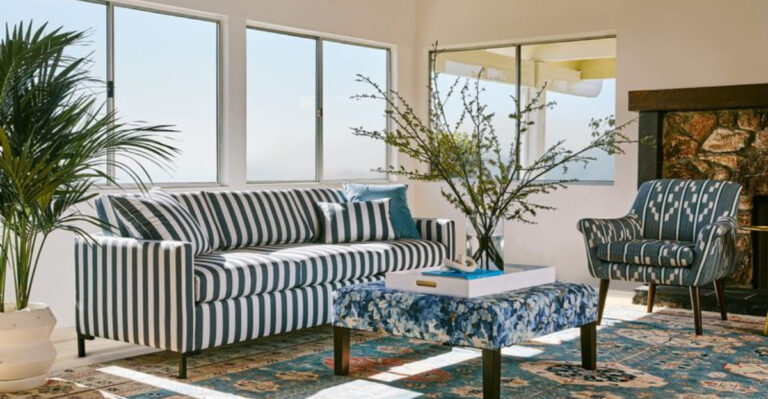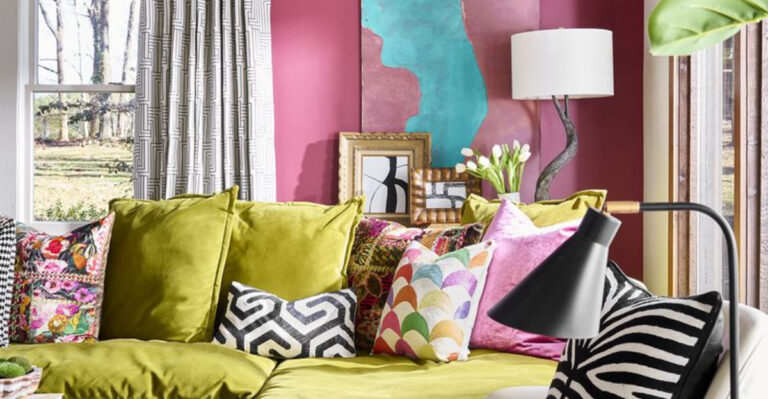25 Ways To Choose The Best Couch Color, According To Designers
Selecting the right couch color can transform your living space into a sanctuary of style and comfort. With so many hues and shades to choose from, it might feel overwhelming at first.
However, by considering a few expert tips and personal preferences, you can easily find a color that reflects your personality and complements your home decor.
Whether you’re drawn to bold, statement-making colors or prefer subtle, understated tones, there’s a perfect couch color waiting for you. Let’s explore these 25 creative ways to decide.
1. Consider Room Size
First, think about the size of your room. In a large, open space, a couch in a bold color can create a striking focal point. However, in a smaller room, a neutral or lighter shade might prevent the space from feeling cramped. Pay attention to how different colors interact with the room’s size and layout.
Additionally, consider the room’s natural light, as it can change how colors appear throughout the day. A well-chosen color can enhance the room’s sense of space and light.
2. Match with Wall Color
Matching your couch to the wall color can create a harmonious look. Choose a couch color that complements or contrasts with your walls. For instance, a light-colored couch against a dark wall can create a dramatic effect.
If your walls are neutral, consider a vibrant couch for a pop of color. Alternatively, a couch in a similar tone to your walls will blend seamlessly. This approach helps in creating a cohesive and balanced room aesthetic. Use samples to compare shades before deciding.
3. Complement Existing Furniture
Your couch should complement existing furniture pieces. Look at the colors of your other furniture, such as chairs and tables. By choosing a couch color that harmonizes with these pieces, you can achieve a chic, coordinated look.
For instance, a beige couch might pair well with wooden furniture. Consider using an accent color from your furniture in your couch choice. This strategy ties the decor together, creating an inviting and stylish environment for your home.
4. Reflect Personal Style
Your couch color should reflect your personal style. If you’re someone who loves vibrant colors, don’t shy away from bold hues. Alternatively, if you prefer a minimalist look, neutral tones might be more appealing. Think about what colors make you feel at home and comfortable.
Additionally, consider how the couch will fit into your overall decor theme. A color that resonates with you personally will ensure your living space feels authentic and welcoming. Trust your instincts.
5. Think About Longevity
Consider how long you plan to keep the couch. If you’re looking for longevity, classic colors like beige, gray, or navy may be best. These colors tend to stay in style longer and can adapt to changing decor trends. Additionally, think about the couch’s material and how it wears over time.
A durable fabric in a timeless color can extend the life of your furniture. Investing in a color that remains appealing over time ensures your living room stays stylish.
6. Assess Fabric and Texture
Choosing the right fabric can influence your color choice. Different materials reflect colors differently. For example, velvet can add depth to colors, making them appear richer. Conversely, a linen fabric might give a more muted look. Consider how the fabric’s texture affects the color’s appearance.
Also, think about durability and how the fabric will fare with wear and tear. A well-chosen fabric and color combination can enhance both the aesthetic and functionality of your couch.
7. Identify a Focal Point
Decide if you want your couch to be the room’s focal point. A brightly colored couch can draw attention and make a bold statement. On the other hand, if you have a feature you want to highlight, like a fireplace or artwork, choose a more subdued couch color.
Consider how the color interacts with other elements in the room. A well-placed focal point can guide the flow of the space and create a balanced, pleasing environment.
8. Consider Family Needs
Family considerations are crucial when choosing a couch color. For homes with children or pets, darker colors or patterns might be more practical to hide stains and wear. However, if your family prefers a lighter, more open feel, opt for a stain-resistant fabric in a lighter shade.
Think about how your family’s lifestyle will affect the couch. Balancing between aesthetics and functionality ensures that the couch remains both beautiful and family-friendly.
9. Coordinate with Flooring
Your flooring can guide your couch color choice. Dark wood floors pair well with lighter couch colors, creating contrast. Conversely, light floors might benefit from a darker couch to ground the space. Consider the material and color of your flooring and how it interacts with the couch.
Additionally, rugs can act as a bridge between the floor and the couch, adding another layer of color coordination. This ensures a harmonious and visually appealing room.
10. Experiment with Patterns
Patterns can add visual interest to your couch. If you choose a patterned fabric, ensure it complements the room’s decor. A busy pattern might suit a minimalist room, adding a pop of character. Meanwhile, a subtle pattern could enhance a more eclectic space.
Consider how patterns affect the perception of color and space. Experiment with different designs to find one that resonates with your personal style and enhances the room’s overall look.
11. Evaluate Seasonal Changes
Some colors look best in certain seasons. For flexibility, consider purchasing multiple couch covers. This allows you to change colors with the seasons—lighter, brighter colors for spring and summer, and richer, warmer tones for fall and winter.
Think about how seasonal changes in light affect your color choice. This approach keeps your living space fresh and exciting throughout the year. It also gives you the opportunity to refresh your decor without major changes.
12. Balance Light and Dark
Balancing light and dark elements creates visual harmony. If your room has a lot of natural light, darker couch colors can create a warm, cozy ambiance. Conversely, in darker rooms, lighter-colored couches can brighten the space.
Consider how light interacts with your chosen color. Also, think about accessories like cushions or throws that can add contrast. This balance ensures that the couch complements the room’s overall lighting, creating a welcoming atmosphere.
13. Align with Trends
Staying on-trend can guide your couch color choice. If you’re someone who loves fashion-forward choices, opt for colors that are currently popular in interior design. Research the latest color trends and consider how they fit into your decor.
However, remember that trends change, so balance trendy colors with timeless accents. This approach keeps your living space modern and stylish while allowing for future updates. Choose what resonates with your personal taste and current trends.
14. Seek Expert Advice
Consulting an expert can provide valuable insights. Interior designers have the experience to suggest colors that suit your home. Consider hiring a professional if you’re unsure about your choices. They can offer guidance on color coordination, fabric selection, and room layout.
Even a brief consultation can provide clarity and confidence in your decision. An expert’s perspective ensures that your couch choice enhances your living space and aligns with your style.
15. Use Color Psychology
Colors can influence mood and ambiance. Consider how different colors make you feel. For instance, blues and greens evoke calmness, while reds and oranges provide energy. Reflect on what you want the room’s atmosphere to convey.
Use color psychology to select a couch color that aligns with your desired mood. This creates a space that not only looks good but also feels right. A thoughtfully chosen color enhances both the aesthetic and emotional appeal of your home.
16. Adapt to Lifestyle
Your lifestyle should influence your color choice. If you entertain often, a stain-resistant, bold color might suit. For a more reserved lifestyle, subtle, neutral tones may be preferable. Additionally, consider how often you change your decor.
A color that can adapt to different styles or themes ensures longevity. Choose a color that fits naturally with how you live. This approach ensures that your couch remains a functional and stylish part of your home.
17. Incorporate Local Influence
Incorporating local influences can personalize your space. Consider colors that reflect your region’s culture or natural surroundings. A coastal home might suit blues and greens, while a desert locale could embrace earthy tones.
Reflect on what makes your area unique and how it can inspire your decor. This approach adds a layer of personal connection to your home. Embracing local influences makes your living space feel authentic and grounded.
18. Explore Complementary Colors
Using complementary colors can create a dynamic look. Choose a couch color that complements other elements in the room. For instance, a blue couch with orange accents can create a vibrant atmosphere. Study a color wheel to find complementary colors that suit your decor.
This strategy adds depth and interest to your living space. It ensures that all elements work together harmoniously, creating a lively and cohesive environment.
19. Consider Future Renovations
If you’re planning future renovations, consider how your couch color will fit. Choose a color that complements your long-term vision for the space. Think about changes in flooring, wall colors, or additional furniture. A versatile color can adapt to different styles or layouts.
This foresight ensures that your couch remains a consistent and stylish part of your home as it evolves. Planning with the future in mind guarantees lasting satisfaction with your choice.
20. Incorporate Texture
Texture adds dimension to your couch. Consider how different textures can enhance your color choice. A textured fabric in a neutral color can add interest without overwhelming the space. Conversely, a smooth texture in a vibrant color can make a bold statement.
Reflect on how texture interacts with other elements in the room. This approach ensures a balanced and engaging decor. Incorporating texture enhances both the visual and tactile appeal of your couch.
21. Create Visual Interest
A couch with a unique color can become a conversation piece. Consider colors that stand out or complement unusual decor features. This brings character and personality to your space. Reflect on how the couch interacts with other elements, like artwork or lighting.
A well-chosen color creates focus and interest, making your living room memorable. This strategy invites guests to appreciate the thoughtfulness of your decor choices, enhancing the room’s overall appeal.
22. Factor in Maintenance
Practicality should guide your color choice. Consider how easy it is to maintain. Some colors, especially lighter ones, might show stains more easily. Choose a color that aligns with your cleaning habits and lifestyle.
Additionally, think about protective treatments or slipcovers that can extend the couch’s life. A color that remains attractive with minimal effort ensures satisfaction and longevity. Balancing aesthetics with practicality makes your living space both beautiful and functional.
23. Integrate Art and Decor
Your couch should harmonize with art and decor. Consider colors in your artwork or decorative pieces and how the couch can enhance them. A couch that complements these colors creates a unified look.
Reflect on how the couch color interacts with other visual elements and contributes to the room’s theme. This ensures a cohesive and polished aesthetic. By integrating art and decor with your couch color, your living space becomes a reflection of your personal style.
24. Use a Mood Board
Creating a mood board helps visualize your ideas. Gather fabric swatches, paint samples, and photos of your current decor. Arrange them to see how different colors interact. This process clarifies your preferences and highlights color combinations you might not have considered.
A mood board offers a tangible way to experiment with ideas before making a decision. By using this tool, you ensure a thoughtful and informed color choice, resulting in a harmonious living space.
25. Think Outside the Box
Embrace creativity when choosing a couch color. Think beyond traditional hues and explore unconventional options. Maybe a vibrant teal or an unexpected mustard yellow speaks to you. Reflect on colors that resonate with your individuality and push the boundaries of typical decor.
This approach adds a personal touch to your space, making it uniquely yours. By thinking outside the box, you create a living room that showcases your distinct personality and style, inviting inspiration and admiration.

